Last month, Hanna Kreitem and I participated in MENOG22, an event organized by the RIPE NCC in Manama, Bahrain. It is the major networking and peering event in the region attracting 183 attendees from 29 countries for two days of presentations, and lots of discussions and interesting exchanges during the breaks and the social event.
During the presentation, IPv6 in the MENOG Region, Alvaro Vives (RIPE NCC) shared the following slide (Figure 1) which stood out for me — it shows the readiness and use of IPv6 in the region.
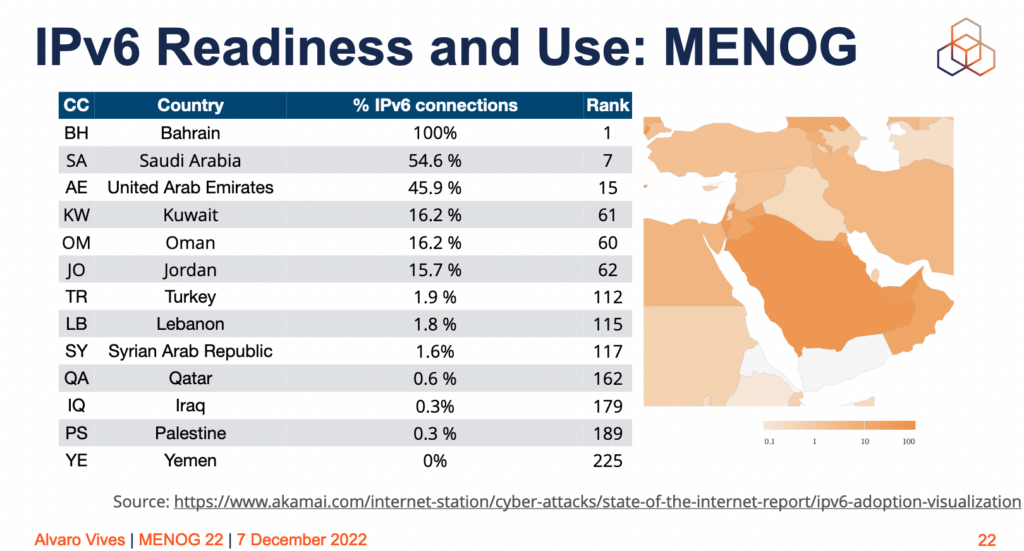
According to this data, 100% of requests to Akamai services coming from Bahrain come over IPv6. This was amazing news for those, like me, who have been trying to promote IPv6 for more than a decade now.
The stat was ‘confirmed’ in the Akamai report, which shows Bahrain as the only country with 100% IPv6 coverage.
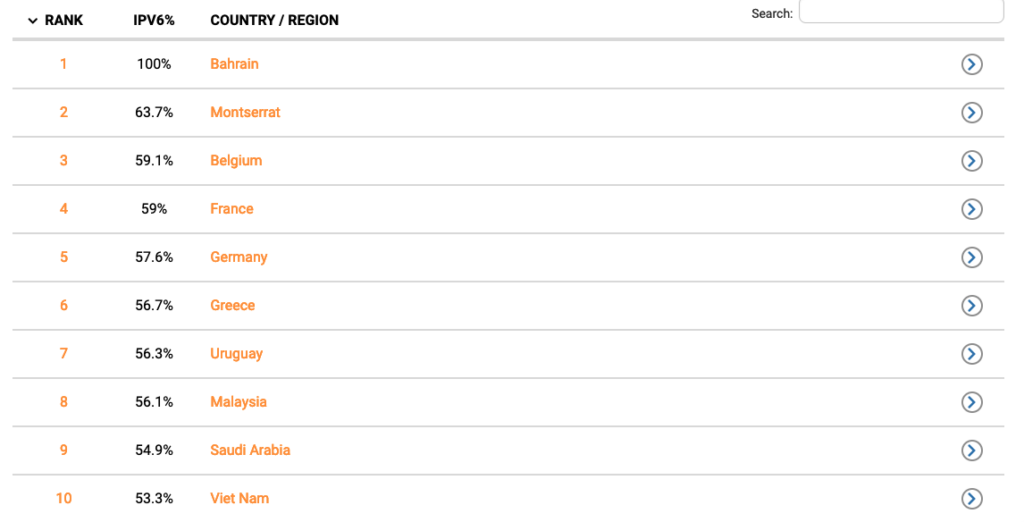
I was interested in understanding how Bahrain achieved this result, so I started looking at the details of the report and found the following graph (Figure 3) showing the growth of IPv6 in the country.

This rate of growth is strange (too linear and clean) compared to other countries, for example, Belgium (Figure 4), where we see a few large steps and then a gradual increase over the last nine years.

In the case of Bahrain, however, we see a quick growth spurt that looks too linear and clean to not be suspicious. As such, I thought it prudent to see how these stats compare to what other measurement platforms see.
Digging Deeper to Validate Data
At Pulse, we seek to aggregate data about things like IPv6 from multiple vantage points to show that measuring the Internet is subjective and requires some comparison to understand what the real state of affairs is. Below is what other IPv6 data sources have to say about the IPv6 status in Bahrain.
RIPE Atlas
RIPE Atlas is a project run by RIPE NCC that uses small probes (hardware and software) that run specific Internet measurements, such as ping, traceroute, and DNS Lookups. In this case, we will start by looking up how many probes are active in Bahrain.
We can do this using the RIPE Atlas Tools, a command-line utility with a long list of functionalities to help you navigate RIPE Atlas, run measurements, and verify their data.
Here is the output from my command:
% ripe-atlas probe-search --country BH --status 1
Filters:
Country: BH
Status: 1
ID Asn_v4 Asn_v6 Country Status
===========================================
54 51375 bh Connected
6998 51375 51375 bh Connected
29171 51375 bh Connected
29198 39273 bh Connected
60506 56494 bh Connected
1000708 16509 16509 bh Connected
1004391 16509 bh Connected
1004392 16509 bh Connected
===========================================
Showing 8 of 8 total probes
There are eight probes in Bahrain active at the moment. Only two of them show an IPv6 Autonomous System Number (ASN), so let’s see what prefixes they have:
% ripe-atlas probe-search --country BH --status 1 --field prefix_v6
Filters:
Country: BH
Status: 1
Prefix_v6
==================
None
2a02:2578:1300::/48
None
None
None
2a05:d01e:c00::/38
None
None
==================
Showing 8 of 8 total probesWe see that the first IPv6 prefix is from Viva Bahrain (AS51375), and the second IPv6 prefix is from Amazon AWS (AS16509). The latter is not important for us, as it is cloud infrastructure, not access infrastructure, so I will not focus on it. Unfortunately, this also means I will have to avoid considering three of the eight probes available.
Of the remaining five, only one has an IPv6 address assigned to it, hosted on Viva Bahrain, as confirmed from a whois lookup for the IPv6 /48 listed by RIPE Atlas:
% Information related to '2a02:2578:1300::/48AS51375'
route6: 2a02:2578:1300::/48
origin: AS51375
mnt-by: VIVABH-MNT
mnt-by: VIVA-BH-MNT
mnt-by: alisabt-mnt
created: 2021-03-25T12:29:32Z
last-modified: 2021-03-25T12:29:32Z
source: RIPEThere are two other probes on this Autonomous System (AS), but they don’t seem to have an IPv6 address or a prefix. This does not give us confidence that 100% of the users in the country have access to IPv6.
IIJ Country Report
The Internet Initiative Japan (IIJ)—a Pulse partner—produces Internet Country Reports that provide an overview of the Internet resources in each country. Looking at the country report for Bahrain, we see that VIVA Bahrain supposedly covers ~35% of the population:
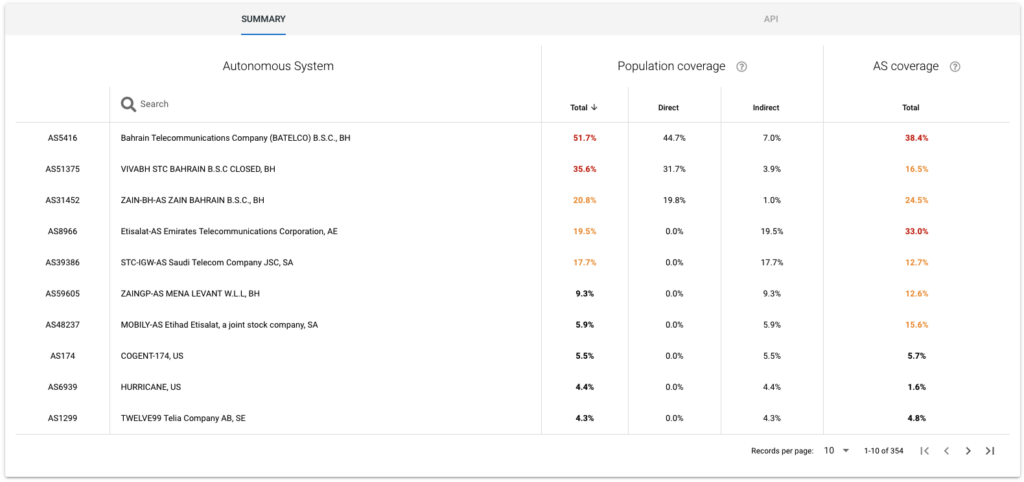
There are no RIPE Atlas probes hosted at BATELCO nor Zain Bahrain, but the fact that VIVA already tells us that only one of the three probes it hosts has IPv6 assigned to it, makes us wonder how Akamai could see 100% of users on IPv6.
Google and Facebook IPv6 Reports
Both Google and Facebook also monitor IPv6 adoption. In this case, Bahrain barely shows up (Figures 6 and 7).

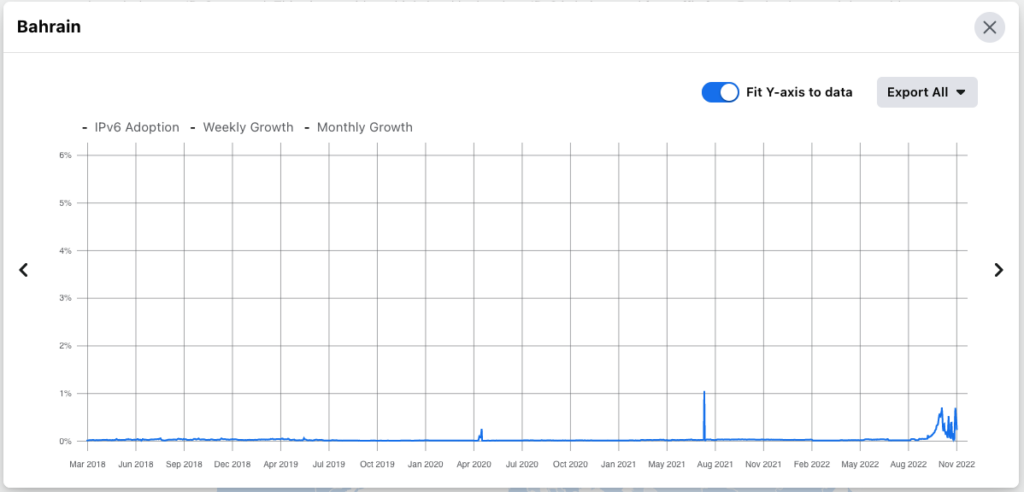
It’s worth noting that Google and Facebook have supported IPv6 for a long time and prioritize IPv6 traffic.
APNIC Labs
Finally, APNIC Labs—another Pulse partner—provides another data source for measuring IPv6 adoption at a global, regional, country, and network level. Like Google and Facebook, IPv6 adoption in Bahrain is nearly non-existent as per its source with only 0.16% of 240,000 website visits delivered by IPv6.
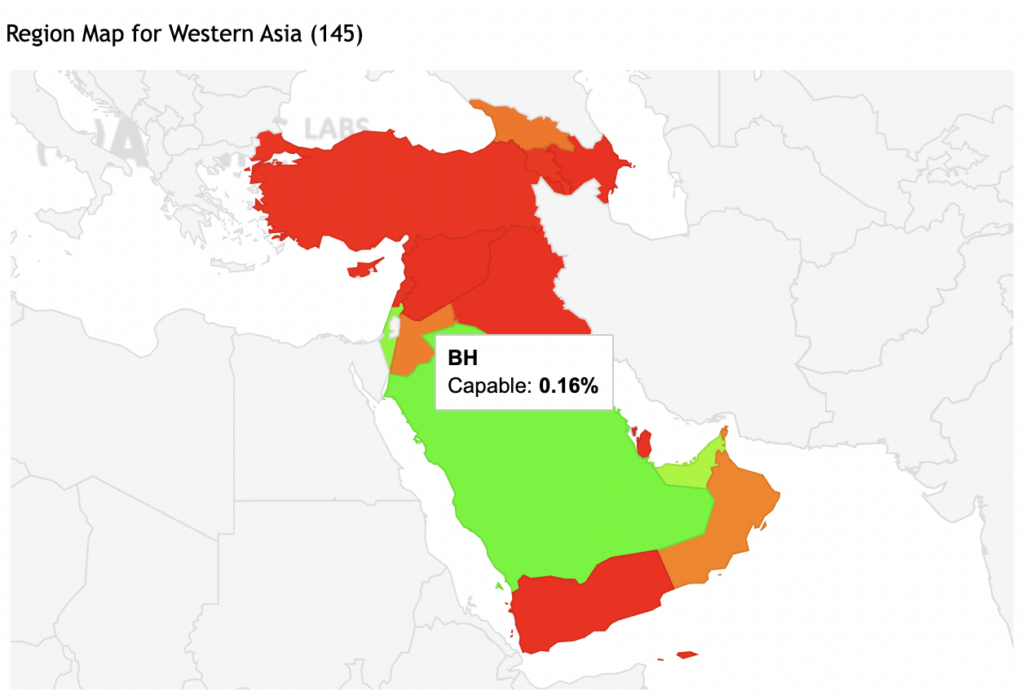
Why is There so Much Difference
As mentioned, measuring the Internet is subjective and it is difficult to get a precise understanding of who is doing what without every network explicitly saying what it does and doesn’t do.
In this case, there are various explanations for Akamai’s over-assessment of IPv6 in Bahrain. The easiest explanation is that there is a bug or a mistake in how the data is collected or presented by Akamai.
Another explanation is that all the probes in Bahrain obtain IPv6 addresses that are not routed outside of the country, and are only used to exchange traffic with Akamai on a direct peering session, where of course, also IPv6 is exchanged. This is not very likely, though, as those addresses would appear in the RIPE Atlas database.
Remember to Check, Compare Your Data Sources
One reason to go to events and conferences is to learn about the latest developments in networking or implementations.
I was hoping for this to be exceptional news and to finally see the first country in the World to reach 100% usage of IPv6, but it seems this is not the case. We will all have to wait a little longer for this to happen.
For now, I hope I’ve shown you a range of interesting statistics, websites, and tools you can use to learn more about how the Internet works and the importance of checking and comparing data.
Photo by Patrick Robert Doyle on Unsplash


